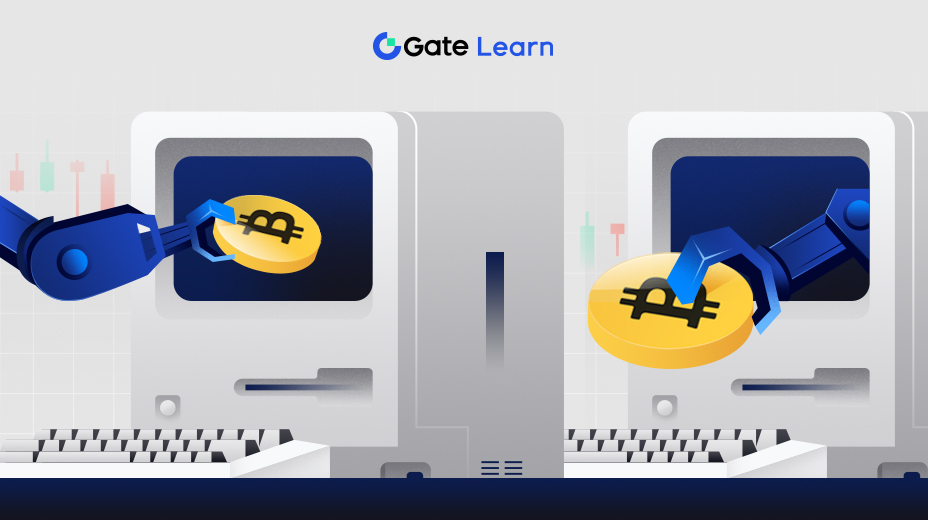Keamanan Smart Contract
Di Modul 3, kita mendalami dunia kontrak pintar—tulang punggung aplikasi DeFi. Anda akan memperoleh pemahaman komprehensif tentang apa itu kontrak pintar dan belajar mengidentifikasi kerentanan di dalamnya. Kami juga akan membahas proses penting audit dan peninjauan kode untuk memastikan keamanan kontrak ini.
Memahami Kontrak Cerdas
Kontrak pintar adalah perjanjian yang dijalankan sendiri dengan ketentuan kontrak yang langsung ditulis ke dalam kode. Mereka beroperasi pada platform blockchain, seperti Ethereum, dan secara otomatis menjalankan tindakan ketika kondisi yang telah ditentukan terpenuhi. Memahami komponen dasar dan mekanisme kontrak pintar sangat penting bagi pengembang dan pengguna di bidang DeFi.
Kontrak pintar terdiri dari tiga komponen utama:
Negara: Ini mewakili kondisi saat ini atau data yang disimpan dalam kontrak. Ini dapat mencakup variabel seperti saldo akun, stempel waktu, atau informasi relevan apa pun yang diperlukan kontrak agar dapat berfungsi.
Fungsi: Fungsi adalah kode yang dapat dieksekusi dalam kontrak pintar yang menentukan tindakan apa yang dapat dilakukan kontrak. Fungsi-fungsi ini dapat digunakan oleh pihak eksternal atau kontrak lain untuk berinteraksi dengan status kontrak.
Peristiwa: Peristiwa digunakan untuk mencatat kejadian penting dalam kontrak. Mereka memberikan cara yang transparan dan dapat diverifikasi untuk melacak aktivitas dan hasil kontrak.
Kontrak pintar diterapkan di jaringan blockchain, dan setiap kontrak memiliki alamat unik. Kontrak ini tidak dapat diubah, artinya setelah diterapkan, kode dan statusnya tidak dapat diubah. Kekekalan ini adalah pedang bermata dua, karena menjamin kepercayaan dalam pelaksanaan kontrak namun juga menekankan pentingnya praktik keamanan yang kuat.
Kerentanan keamanan kontrak pintar dapat menimbulkan konsekuensi yang parah, termasuk kerugian finansial. Kerentanan umum mencakup serangan masuk kembali, di mana pelaku jahat berulang kali menghubungi kontrak yang rentan untuk menguras dana, dan masalah integer overflow/underflow yang dapat menyebabkan perhitungan yang salah. Untuk memitigasi risiko ini, penting untuk melakukan audit kode secara menyeluruh, pengujian, dan kepatuhan terhadap praktik terbaik.
Interaksi dengan kontrak pintar dimulai dari transaksi yang disiarkan ke blockchain. Transaksi dapat dimulai oleh pengguna atau kontrak pintar lainnya, dan transaksi tersebut menyertakan instruksi agar kontrak dapat menjalankan fungsi tertentu. Setiap transaksi dikenakan biaya, yang dikenal sebagai gas, sebagai kompensasi bagi penambang untuk memproses transaksi tersebut. Semua transaksi dan kode kontrak dicatat dalam buku besar umum, sehingga dapat diaudit oleh siapa pun. Transparansi ini menumbuhkan kepercayaan pada aplikasi DeFi tetapi juga menyoroti pentingnya pengkodean yang aman dan praktik pengembangan yang bertanggung jawab.
Kerentanan dalam Kontrak Cerdas
Salah satu kerentanan paling umum dalam kontrak pintar adalah serangan masuk kembali. Jenis serangan ini terjadi ketika kontrak eksternal memanggil fungsi kontrak yang rentan berulang kali sebelum kontrak tersebut menyelesaikan eksekusinya. Penyerang dapat menguras dana dari kontrak yang rentan, sehingga menyebabkan kerugian finansial yang signifikan. Untuk memitigasi risiko masuknya kembali, pengembang harus menerapkan pola interaksi-efek-interaksi dan menggunakan “penjaga masuk kembali.”
Kerentanan integer overflow dan underflow merupakan kekhawatiran signifikan lainnya. Kerentanan ini muncul ketika operasi matematika dalam kontrak pintar menghasilkan nilai yang melebihi batas yang telah ditentukan sebelumnya. Misalnya, luapan dapat terjadi saat menjumlahkan dua bilangan besar, yang mengakibatkan hasil yang tidak diinginkan. Pengembang harus menerapkan operasi aritmatika yang aman dan menggunakan perpustakaan seperti SafeMath OpenZeppelin untuk mencegah kerentanan tersebut.
Panggilan eksternal yang tidak dicentang menunjukkan risiko keamanan lainnya. Jika kontrak pintar berinteraksi dengan kontrak eksternal tanpa validasi yang tepat, penyerang dapat memanipulasi panggilan ini untuk mengeksploitasi kerentanan. Untuk memitigasi risiko ini, pengembang harus menggunakan antarmuka yang dirancang dengan cermat dan memvalidasi interaksi kontrak eksternal.
Kontrak pintar juga mungkin mengalami masalah kontrol akses, di mana pengguna atau kontrak yang tidak sah dapat mengubah status kontrak penting atau melakukan tindakan terbatas. Menerapkan mekanisme kontrol akses yang tepat, seperti izin berbasis peran, dapat membantu mencegah akses dan modifikasi yang tidak sah.
Serangan front-running dapat terjadi ketika pengguna jahat mengeksploitasi asimetri informasi untuk melakukan transaksi sebelum orang lain, sehingga berpotensi memanipulasi pasar atau menyebabkan kerugian bagi peserta yang jujur. Pengembang dan pengguna harus menyadari risiko yang terkait dengan front-running dan mempertimbangkan untuk menggunakan pertukaran terdesentralisasi dengan perlindungan bawaan.
Kerentanan panggilan delegasi dan panggilan dapat dieksploitasi untuk mengelabui kontrak agar mengeksekusi kode yang tidak diinginkan, yang berpotensi mengarah pada tindakan jahat. Pengembang harus berhati-hati saat menggunakan fungsi tingkat rendah ini dan mengikuti praktik terbaik untuk memitigasi risiko. Kontrak pintar yang dirancang dengan buruk atau tidak diaudit merupakan kerentanan tersendiri. Menerapkan kontrak tanpa audit dan pengujian kode yang tepat meningkatkan kemungkinan kelemahan keamanan yang belum ditemukan. Pengguna harus berhati-hati saat berinteraksi dengan kontrak yang tidak diaudit dan mempertimbangkan reputasi serta transparansi proyek.
Audit dan Tinjauan Kode
Audit kontrak pintar adalah proses sistematis dan komprehensif untuk meninjau kode, logika, dan fungsionalitas kontrak pintar untuk mengidentifikasi kerentanan, kelemahan, dan potensi risiko keamanan. Auditor, seringkali dari perusahaan keamanan khusus, melakukan pemeriksaan mendalam untuk memastikan bahwa kontrak berjalan sebagaimana mestinya dan tahan terhadap serangan.
Auditor memeriksa kode untuk mencari masalah seperti kerentanan masuk kembali, masalah integer overflow/underflow, dan panggilan eksternal yang tidak dicentang. Selain itu, mereka menilai kepatuhan kontrak terhadap praktik terbaik dan standar industri.
Peninjauan kode merupakan bagian integral dari proses audit. Ini melibatkan pemeriksaan yang cermat terhadap kode sumber kontrak, memastikan bahwa kode tersebut terstruktur dengan baik, mengikuti konvensi pengkodean, dan mudah dipahami. Peninjau kode mencari potensi masalah terkait keterbacaan, pemeliharaan, dan efisiensi.
Auditor dan peninjau kode juga menilai kepatuhan kontrak terhadap spesifikasi proyek dan fungsionalitas yang diinginkan. Mereka memverifikasi bahwa kontrak pintar secara akurat mencerminkan logika yang dimaksudkan dan berinteraksi secara efektif dengan komponen lain dari aplikasi DeFi.
Alat dan pemindai otomatis sering digunakan untuk membantu proses audit. Alat-alat ini membantu mengidentifikasi potensi kerentanan dengan lebih cepat dan sistematis, sehingga memungkinkan auditor untuk fokus pada logika yang kompleks dan kasus-kasus edge.
Setelah proses audit selesai, auditor menghasilkan laporan audit terperinci. Laporan ini memberikan gambaran umum tentang postur keamanan kontrak, mencantumkan kerentanan yang teridentifikasi, dan menawarkan rekomendasi mitigasi. Pengguna dan pengembang harus meninjau laporan audit secara menyeluruh sebelum berinteraksi atau menerapkan kontrak pintar.
Memperbarui dan mengaudit ulang kontrak pintar secara teratur sangatlah penting. Seiring berkembangnya lanskap DeFi dan munculnya kerentanan baru, kontrak yang sebelumnya aman mungkin menjadi rentan. Oleh karena itu, pemantauan, pemeliharaan, dan audit keamanan yang berkelanjutan diperlukan untuk beradaptasi dengan perubahan persyaratan keamanan. Audit berbasis komunitas dan bug bounty dapat berkontribusi terhadap keamanan kontrak pintar. Komunitas DeFi sering kali berpartisipasi aktif dalam proses peninjauan keamanan, membantu mengidentifikasi kerentanan dan meningkatkan keamanan kontrak.
Highlight
- Kontrak pintar adalah perjanjian yang dijalankan sendiri dengan ketentuan berbasis kode. Memahami struktur dan kerentanannya sangat penting untuk keamanan DeFi.
- Kerentanan seperti serangan masuk kembali, integer overflow/underflow, dan panggilan eksternal yang tidak terkendali dapat menyebabkan kerugian finansial. Masalah kontrol akses, serangan yang terjadi di awal, panggilan delegasi, kerentanan panggilan, dan kontrak yang tidak diaudit juga menimbulkan risiko.
- Audit adalah tinjauan sistematis terhadap kode dan logika kontrak pintar untuk mengidentifikasi kerentanan dan risiko keamanan. Auditor memberikan laporan rinci dengan rekomendasi mitigasi.
- Tinjauan kode menilai struktur kode, keterbacaan, dan kepatuhan terhadap konvensi pengkodean. Ini memastikan bahwa kontrak secara akurat mewakili logika dan fungsionalitas yang diinginkan.
- Alat dan pemindai otomatis membantu auditor dalam mengidentifikasi kerentanan secara efisien. Mereka membantu memfokuskan auditor pada logika kompleks dan kasus-kasus rumit.
- Pembaruan rutin, audit ulang, dan pemeliharaan sangat penting untuk beradaptasi dengan persyaratan keamanan yang terus berkembang. Audit berbasis komunitas dan bug bounty berkontribusi pada peningkatan keamanan kontrak pintar di ekosistem DeFi.





